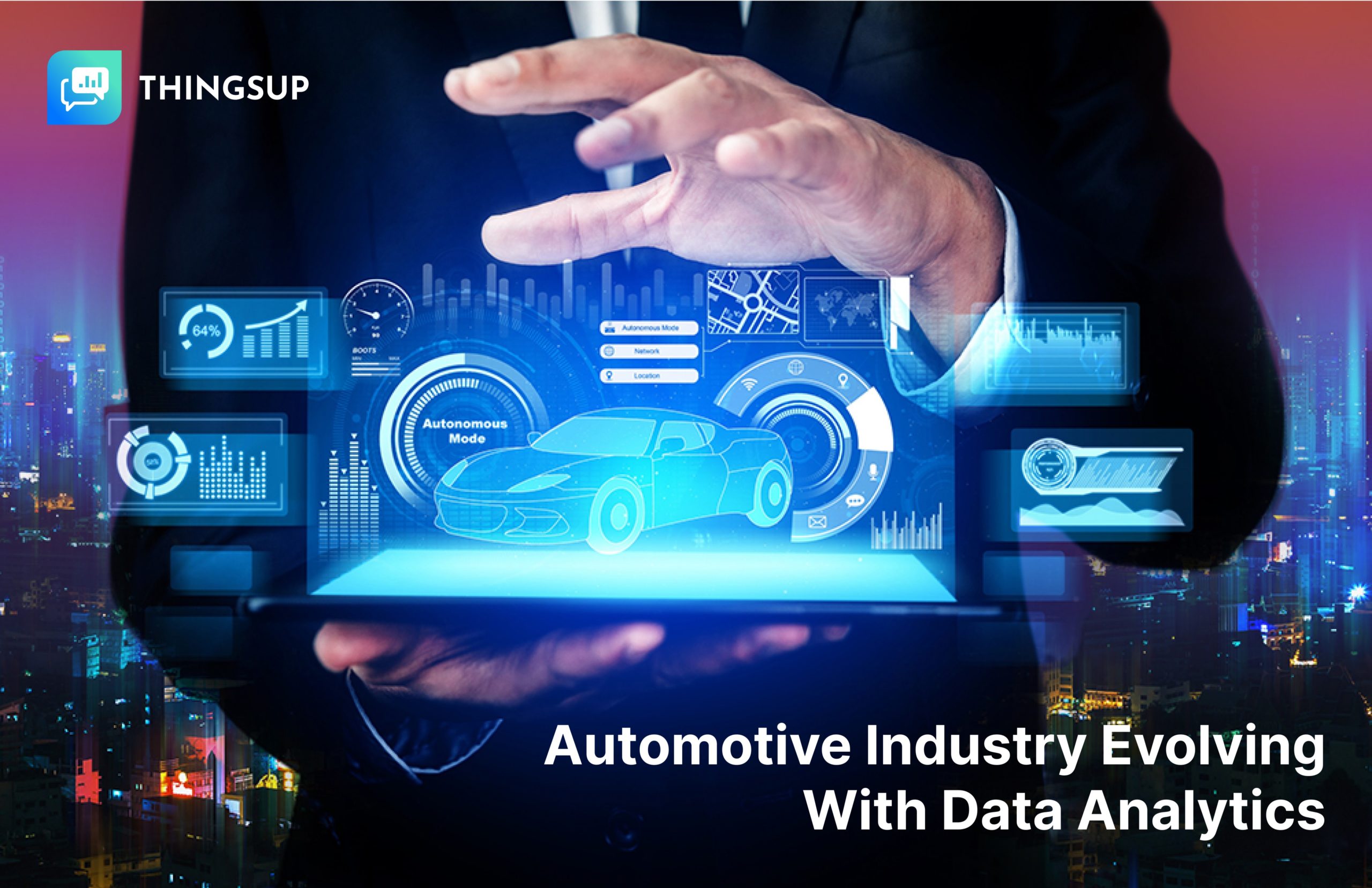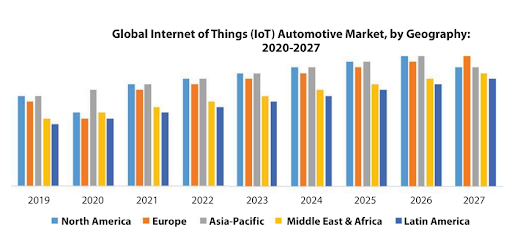The integration of the IoT platform and data analytics has undoubtedly brought about a huge change in the automotive industry.
Once thought to be a concept of the future, the Internet of Things is now making it a reality in the automobile sector. It will allow for more efficient transportation, better vehicle management, and a better overall driving experience.
Before moving forward, let’s have a look at some statistics:
- The global Automotive IoT market is expected to generate US$251.90bn by the end of 2024.
- The market is expected to grow at a rate of 8.09 percent per year from 2024 to 2029, reaching a total value of US$371.60 billion by 2029.
- Among all countries worldwide, the United States is expected to generate the highest revenue in the Automotive IoT market sector, amounting to US$91.62bn in 2024.
- In the worldwide Automotive IoT market, Germany’s advanced manufacturing capabilities and strong automotive industry position it as a leader in developing connected car technologies.
Here is the Researchgate report on Global IoT in the Automotive market:
According to the data, it’s not just a technological shift; it’s a mindset shift that affects every part of the business, from designing and making vehicles smarter to customer service and repair.
In this blog, we’ll discuss how the Internet of Things (IoT) data analytics is driving this change and changing the face of the automotive industry.
Understanding IoT and Its Role in Data Collection
The Internet of Things (IoT) refers to a network of physical devices connected to the Internet and can easily collect and exchange data. If we talk about IoT in the automotive sector, IoT includes various sensors and systems embedded in vehicles, including:
- GPS systems: These systems keep track of where vehicles are, how fast they are going, and what their routes are/will be. This information is very useful for tracking and managing a fleet of vehicles.
- Accelerometers: To ensure that safety systems work properly, accelerometers measure how fast a car is moving and can detect sudden stops, accidents, and other strange events.
- Temperature Sensors: Monitoring the temperature of engine components and the cabin environment helps maintain optimal operating conditions and passenger comfort.
- Fuel sensors: Fuel sensors let you know real-time fuel data, such as how much fuel you have left and how much you’re using. This helps you handle your fuel more efficiently and has less of an effect on the environment.
- Tyre Pressure Monitoring Systems (TPMS): These smart systems alert drivers about tyre air pressure, which is crucial for safety and fuel efficiency.
These devices generate a diverse set of data types, which include:
Vehicle Performance Data: It tells the status of the engine (hot, too hot), the average speed, emissions, and other mechanical aspects like battery, oil change, etc. All these things are necessary for diagnosis and maintenance.
Driver Behavior Data: Data on acceleration patterns, braking, and speed can help understand driving habits, improve safety, and reduce wear and tear.
Environmental Data: Environmental Data includes information about various external conditions that can impact vehicle performance and safety. These include factors like temperature, humidity, road conditions, and weather.
The Role of Data Analytics in Automotive
Data Collection and Storage
IoT platforms can collect a huge amount of information from connected vehicles. This information includes practical measures. Measures including how much fuel the vehicle uses, how healthy the engine is. Besides, more specific information like how parts wear out and how the driver usually drives.
Data Preprocessing
Whenever IoT platform collect data, they often collect a lot of unnecessary information, or sometimes, the data is collected incorrectly by mistake. In this way, data preprocessing ensures that all the data that comes through is correct and suitable for in-depth analysis.
Data Analysis Techniques
After the data has been preprocessed, different analysis methods are used to get useful information:
- Predictive analytics: This method uses past data to predict what will happen in the future. For example, it can guess when a car part might break down, allowing repair before it happens.
- Machine Learning: Algorithms that use machine learning learn from data to find patterns and predict what will happen next.
- Artificial Intelligence (AI): Artificial Intelligence makes it easier to process and research very large datasets. This data reveals insights that traditional methods of analysis might miss. AI is especially useful for creating self-driving cars and other high-tech safety features.
Data Visualization
Data visualization tools turn complex information into charts, graphs, and visuals that are simple to understand. This picture helps everyone, from engineers to administrators, quickly understand important ideas and make smart decisions.
Key Applications of IoT Data Analytics in Automotive
Predictive Maintenance
One of the best things about data analytics using IoT platforms is the ability to predict repair needs. Analytics can tell when parts are likely to break by constantly checking a vehicle’s health data. This lets maintenance happen before problems happen, making the vehicle safer to drive and cutting down on maintenance costs and downtime.
Vehicle Performance Optimization
Data analytics helps improve the performance of vehicles by showing how different parts work together. For example, analytics can find inefficient ways to use fuel or suggest changes that will make an engine run better. This makes cars use less fuel, emit less pollution, and respond more quickly.
Driver Safety and Assistance
Advanced driver assistance systems (ADAS) and autonomous vehicles rely heavily on data analytics, often processed through an IoT platform. These systems use real-time data to provide features like adaptive cruise control, lane-keeping assistance, and emergency braking. Consequently, analyzing data from cameras and sensors, IoT-powered systems enhance driver safety and prevent accidents.
Connected Car Services
A “connected car” aims to improve in-car services by combining IoT data through an IoT platform. This includes advanced infotainment systems, real-time navigation, and personalized experiences based on driver preferences. An IoT platform enables seamless connectivity, providing drivers and passengers an enriched and interactive experience.
Conclusion
The automotive industry is transforming as IoT platforms and data analytics are being used together in unprecedented ways.
This is creating massive opportunities for innovation and efficiency. IoT data analytics greatly affects many areas. From making vehicles safer and better at what they do to improving industry and customer service.
As the industry continues to evolve, adopting these technologies will only deepen, setting the stage for future innovations of an even higher level.







